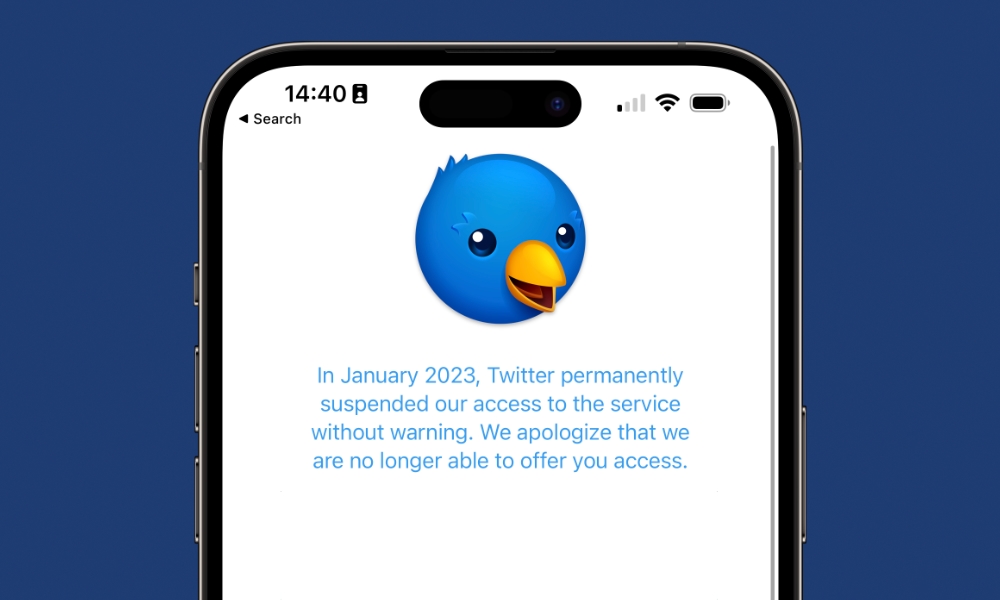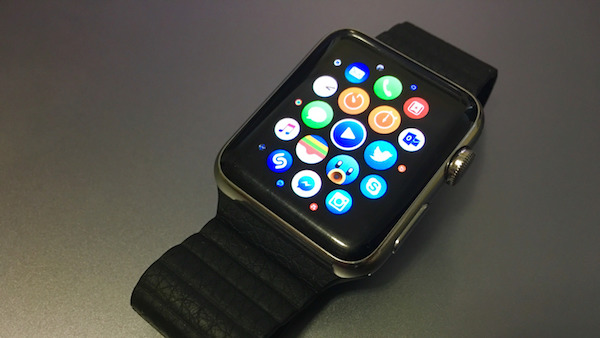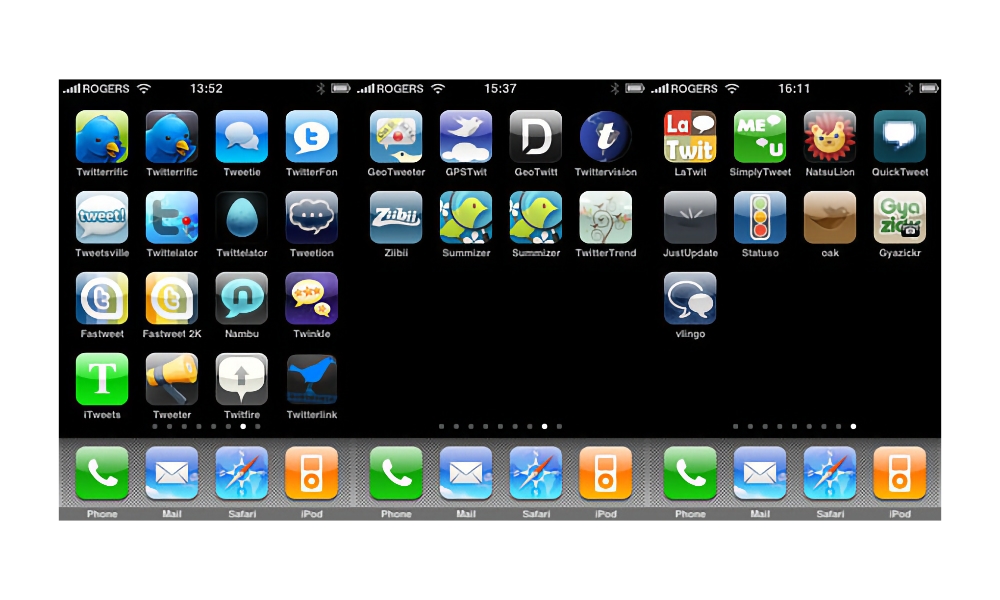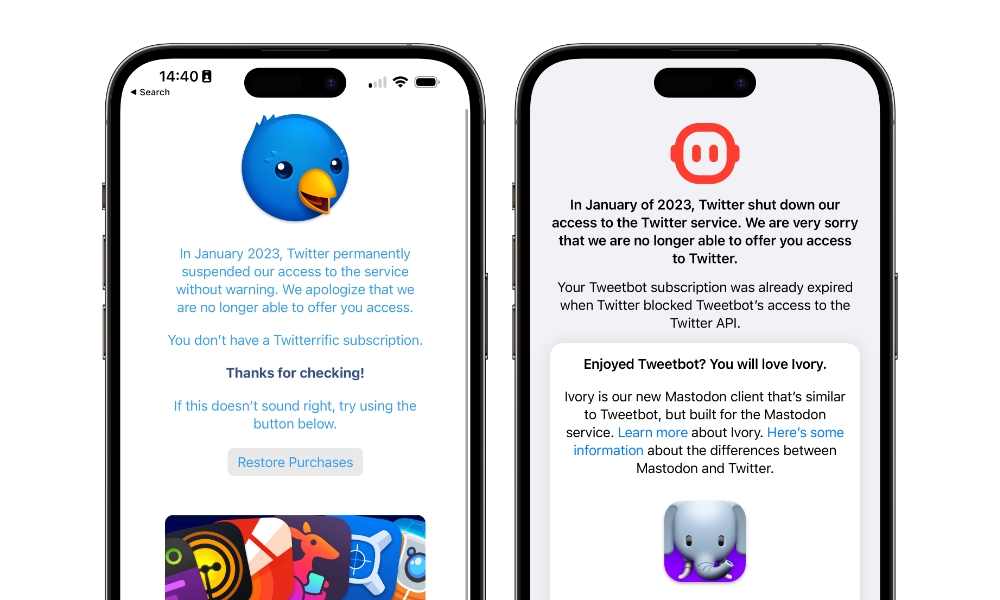Small Third-Party Developers Suffer in the Wake of Twitter’s Sudden API Ban | Here’s How You Can Help
 Credit: Jesse Hollington / iDrop News
Credit: Jesse Hollington / iDrop News
Toggle Dark Mode
Twitter has become something of a dumpster fire since Elon Musk dropped $44 billion to become its supreme overlord. Since then, Musk has made a series of misguided and controversial decisions, including firing half of the company’s employees, insisting on “hardcore” overtime hours, allowing anybody to become “verified” by paying $8/month and banning links to other social media sites.
One of the social media giant’s latest capricious moves has been to declare an all-out ban on third-party Twitter clients, many of which have contributed to making the service what it is today — and it did so in the worst way possible, cutting off access to its third-party API suddenly and with zero notice.
Of course, Twitter is now a private company owned by one person. Its new owner has every right to decide who can play in his sandbox, and it’s also not an entirely new issue. Twitter discontinued a popular API feature affecting developers of third-party apps in 2018, years before Musk had set his sights on the social media service.
However, that change came with a six-month advance warning that was followed by a two-month extension. By comparison, Musk’s latest move came with the very opposite of advance notice; the company arbitrarily switched off the API for third-party apps on January 12 without actually telling anybody about it. The first official hint that this was a deliberate move appeared on January 17 in a tweet that suggested the company was merely enforcing the rules that had been in place for years.
This brief statement only caused more confusion since it didn’t say anything about which rules were being enforced. Third-party Twitter apps weren’t actually breaking any rules. However, the lack of clarity shouldn’t be surprising, considering that Twitter’s entire communications team and most of its developer platform engineers were casualties of its earlier mass layoffs.
Ultimately, an update to its developer agreement arrived on January 19 — a week after the API had been turned off. This marked the first official notification that third-party Twitter clients would no longer be permitted.
Biting the Hand that Once Fed It
Twitter owes much of its success to many of the same third-party developers that it’s just kneecapped by this sudden and arbitrary move.
With its SMS-like 140-character limit, the social media service seemed like it was made for use on smartphones, and many developers agreed. Nearly three dozen Twitter apps appeared in the months following Apple’s launch of the App Store in 2008 — none of which included an official app from Twitter itself.
While most of these apps have since faded into obscurity, many were brilliant for their day, and at least one has stood the test of time: The Iconfactory’s Twitterrific.
It’s hard to understate how much influence these early apps had on Twitter’s growth. Twitterrific was the first to use the word “tweet” to describe a Twitter post and the first to use the bird icon that later became part of Twitter’s branding.
Twitter also built its own iPhone app directly from one of these early third-party apps. In 2010, nearly two years after the App Store swung the doors open, Twitter acquired Tweetie, rebranding it into the Twitter app we know today.
Small Developers are Paying the Price
It’s sad that after helping to build Twitter and weathering many storms in the years since apps like Twitterrific and Tweetbot are being so unceremoniously cast off by the social media service’s new leadership.
While most other apps rode off into the sunset years ago, these two survived among iPhone and Mac fans as a better way to access the service. More recent changes to Twitter had forced them to adopt a subscription model — access to Twitter’s Premium API could run anywhere from $149–$2,499/month — but the pricing was reasonable enough that both developers still found many folks who were happy to pay for the better Twitter iPhone experience.

Sadly, with most users opting for the more affordable yearly subscription, both companies find themselves in the awkward position of having to shut down while they still have paying customers whose plans have yet to run out. Twitter’s decision has rendered these apps useless, and the developers have no elegant way of winding things down. With several months’ notice, they could have stopped accepting new subscriptions, but now they’re stuck having to issue prorated refunds to give back the money they’ve already collected.
Since these subscriptions were handled by the App Store, the refunds will be issued automatically over the next few weeks. Both developers have released updates to their apps apologizing that they can no longer provide their users with access to Twitter — an ironic twist considering that this was Twitter’s doing, and it hasn’t apologized for anything — and explaining the refund situation.
However, if you were a fan of these apps and want to support the developers, they’ve also provided a way you can decline your prorated refund. If you were a subscriber, you’ll need to open the latest version of the app to do this — you can reinstall it from the App Store if necessary — and tap the “I Don’t Need a Refund Button.”
Of course, if you want your refund, you don’t need to do anything at all. It will come automatically through Apple. However, it’s important to remember that most of this money isn’t coming from the multi-trillion dollar Apple; 70–85% of it will be paid out of the pockets of the developers of these apps. As John Gruber points out over at Daring Fireball, “it’s a couple of bucks for you, but in the aggregate, this amounts to an existential sum of already booked revenue for these two companies, both exemplars of the indie iOS and Mac community.”









